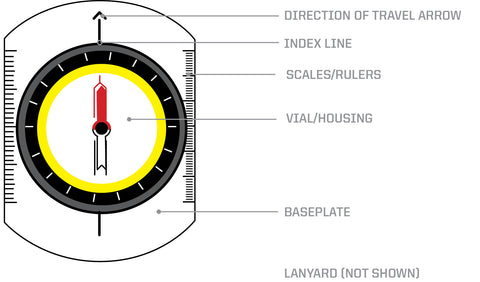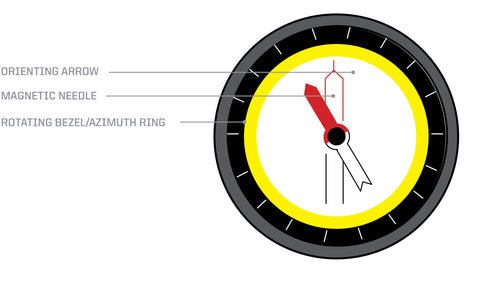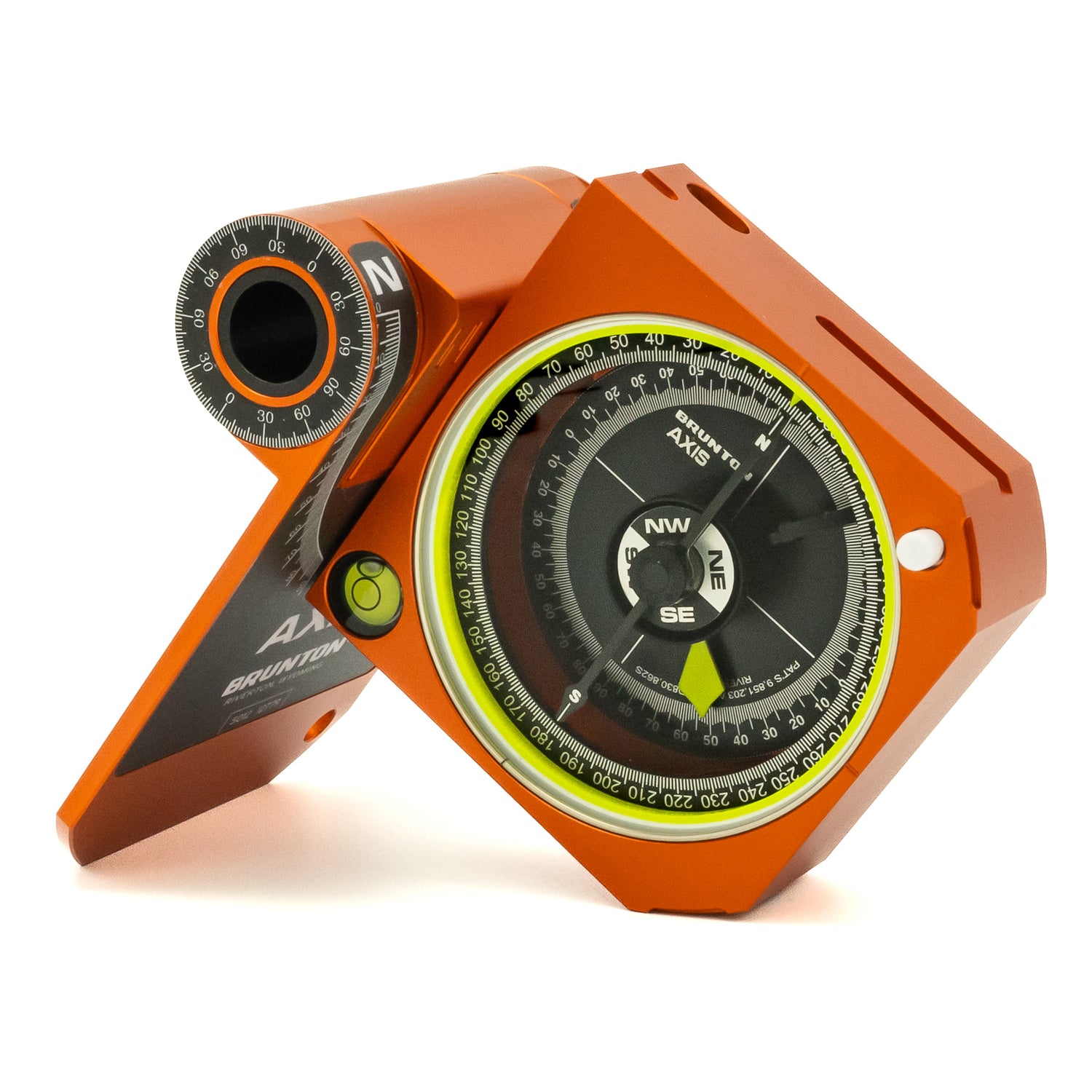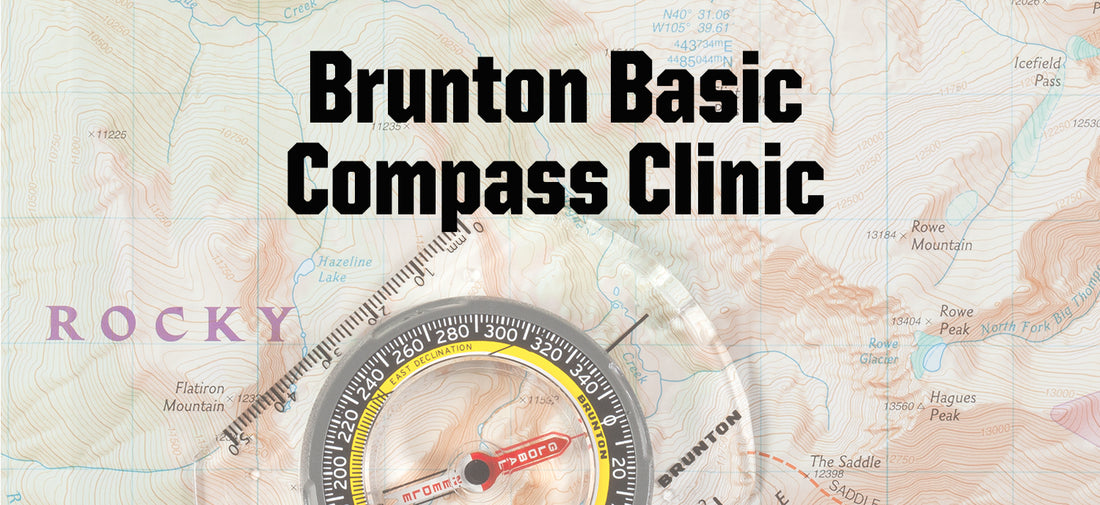A map and compass (and how to use them) often tops the list of backpacking essentials. The Brunton Basic Compass Clinics are the first in an ongoing series of bite size educational facts to make compass and map use easy and accessible. Our goal is to address any negative stigmas or anxiety around using a compass and map that is often a roadblock for both new and experienced outdoors people. We hope to remove these barriers and help people navigate outdoors with confidence.
In the second installment of the Brunton Basic Compass Clinic, we’ll look at the anatomy of a basic baseplate compass and explain what everything does.
Basic Baseplate Compass

Baseplate
The foundation of a map-worthy compass and is the clear plastic that houses the actual compass and has straight edges and scales or rulers for use with maps.
---
Scales/Rulers
Just like the name implies, rulers to help measure distance that are necessary for effective map work.
---
Vial/Housing
The heart of the compass and can be air or liquid filled. Liquid filled vials dampens the needle for easier reading.
---
---
Index Line
Indicates where you take the reading from.
---
---
Direction of Travel Arrow
When holding a compass, point the Direction of Travel (DOT) Arrow in the direction you want to go, or at the object you are orienting towards.
---
Lanyard
Keeps your compass handy when you’re on the trail and can also be used for gauging distances on a map.

Orienting Arrow
There’s a common saying, "put Red in the Shed." This is the ‘Shed’ where you put the “red” magnetic needle and properly orients the compass to the desired direction. While not critical for map work, in the field, this is where you align the Magnetic Needle.
---
Magnetic Needle
This needle always points towards Magnetic North. Note, the magnetic needle can be affected by cell phones or other ferrous and magnetic materials.
---
Rotating Bezel/Azimuth Ring
A rotating ring on the outer edge of the Vial has the scales that orient to your bearing. The scale represents 360 degrees, with North being 0˚, East at 90
˚, South at 180
˚, and West at 270
˚. The more precise a compass, the more fine the increments of resolution. The most precise compasses having 1
˚ increments.
Want to know more basic compass information?
Check out our clinics with the link below, and make sure to check back as we are adding content.


